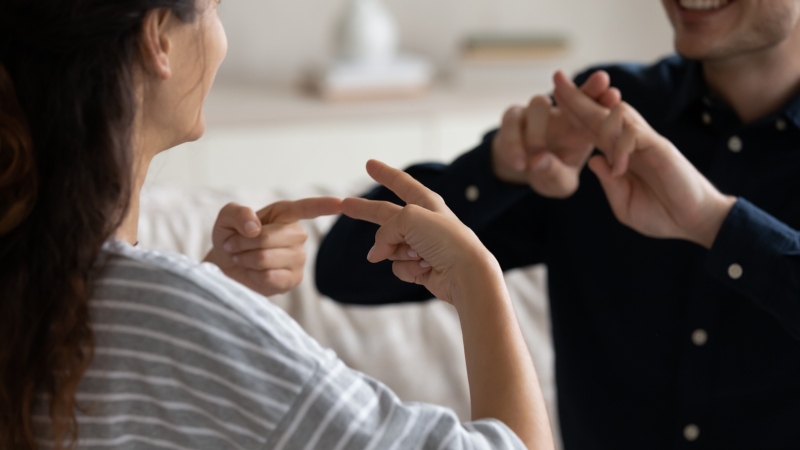
For nearly 50 years, Ursula Bellugi led research at San Diego’s Salk Institute for Biological Studies, in its laboratory for cognitive neuroscience.
Bellugi pioneered the study of the biological foundations of language. When she died in La Jolla, California, near San Diego, earlier this year at age 91, the Salk Institute described her as “the first to demonstrate that ASL [American Sign Language] is a true language,” with its own grammar and syntax.
As the world observes International Day of Sign Languages on September 23, Bellugi’s globally recognized work is back in the spotlight.
Often collaborating with her husband, linguist Edward S. Klima (1931–2008), Bellugi worked to establish the neurobiology of ASL. The couple advanced scientists’ understanding of the origins of language in the brain — whether signed, spoken or written.
Bellugi differentiated the world’s 100-plus sign languages as languages in their own right, rather than translations of spoken words.
She once said of her research: “Nobody thought there was anything like language among deaf people. We discovered and uncovered the particular languages that deaf people invented on their own, and they were languages of the hand and in the eyes.”
What’s more, Bellugi proved that linguistic systems were passed down from one generation of deaf people to the next.
Background
Bellugi was born Ursula Herzberger in Jena, Germany, and emigrated to New York at age 3 with her parents in 1934. Her father, a physicist, and mother, an artist, were friends of Albert Einstein, who helped the family settle in Rochester, New York.
After earning a bachelor’s degree, she married Italian composer and conductor Piero Bellugi, had two sons, and divorced in 1959 (but kept her first husband’s surname). In 1967, she earned a doctorate of education from Harvard University, where she became an associate professor. Fascinated by the development of language in children, she began studying sign language and working with the deaf.
During her tenure at Harvard, she married Klima. In 1968, they moved to La Jolla, where Bellugi began working at the Salk Institute at Jonas Salk’s invitation. She authored or co-authored several books (including The Signs of Language) and received numerous awards recognizing her achievements in linguistics and neurobiology.
Erasing stigma
Bellugi’s and Klima’s work contributed to a wider acceptance of ASL as a language of instruction and empowered the Deaf pride movement of the 1980s, according to the New York Times.
Her accomplishments didn’t end there. In 1981, she began researching Williams Syndrome, a genetic condition that produces cognitive deficits and also heightened sociability. Today, she is widely regarded as pioneering the study of Williams Syndrome, using advanced imaging technologies to visualize how gene deletions alter brain activity.
“She leaves an indelible legacy of shedding light on how humans communicate and socialize,” Salk President Rusty Gage said. “The humanity and compassion she brought to her work were truly special.”
—
Previously Published on share.america.gov
***
You Might Also Like These From The Good Men Project
 Compliments Men Want to Hear More Often Compliments Men Want to Hear More Often |
 Relationships Aren’t Easy, But They’re Worth It Relationships Aren’t Easy, But They’re Worth It |
 The One Thing Men Want More Than Sex The One Thing Men Want More Than Sex |
 ..A Man’s Kiss Tells You Everything ..A Man’s Kiss Tells You Everything |
Join The Good Men Project as a Premium Member today.
All Premium Members get to view The Good Men Project with NO ADS. A $50 annual membership gives you an all access pass. You can be a part of every call, group, class and community. A $25 annual membership gives you access to one class, one Social Interest group and our online communities. A $12 annual membership gives you access to our Friday calls with the publisher, our online community.
Register New Account
Log in if you wish to renew an existing subscription.
Need more info? A complete list of benefits is here.
—
Photo credit: iStock
The post She Proved Signing Is More Than Translating Spoken Words appeared first on The Good Men Project.
